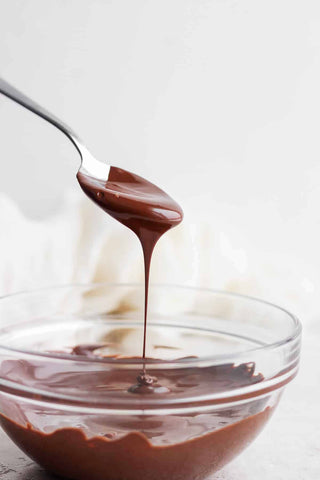The Science Behind Melting Chocolate
There's nothing quite like the experience of biting into a piece of smooth, velvety melted chocolate. Whether it's drizzled over a warm brownie or used as a dip for fresh strawberries, melting chocolate adds a touch of indulgence to any dessert. But have you ever wondered why chocolate melts in the first place?
Chocolate is made up of cocoa solids, cocoa butter, and sugar. Cocoa butter, the fat in chocolate, is what gives it that luscious texture and rich flavor. The melting point of cocoa butter is just below body temperature, around 93°F (34°C), which is why chocolate melts so easily in our mouths.
When heat is applied to chocolate, the cocoa butter starts to melt, causing the chocolate to transform from a solid to a liquid state. This process is known as tempering. It's important to note that melting chocolate requires careful attention to temperature and technique to achieve the desired result.
The Art of Melting Chocolate
To melt chocolate properly, it's crucial to use gentle heat and avoid overheating. Here are a few methods you can try:
- Double Boiler: Place a heatproof bowl over a pot of simmering water, making sure the bottom of the bowl doesn't touch the water. Break the chocolate into small pieces and stir it occasionally until melted.
- Microwave: Chop the chocolate into small, uniform pieces and place them in a microwave-safe bowl. Heat in short intervals, stirring after each interval, until smooth and melted.
- Hot Water Bath: Fill a larger bowl with hot water and place a smaller bowl with the chocolate on top. Stir the chocolate until melted.
Regardless of the method you choose, it's important to remember that chocolate can easily scorch or seize if exposed to high heat or moisture. Always keep your tools and utensils dry, and avoid getting water or steam into the chocolate.
Tips for Melting Chocolate
- Use high-quality chocolate for the best flavor and texture.
- Chop the chocolate into small, uniform pieces to ensure even melting.
- Stir the chocolate frequently to prevent hot spots and ensure smooth melting.
- Avoid using plastic utensils, as they can retain moisture and affect the quality of the melted chocolate.
- If the melted chocolate becomes too thick or clumpy, you can add a small amount of vegetable oil or cocoa butter to thin it out.
Fun Ways to Use Melted Chocolate
Now that you know the secrets of melting chocolate, let your creativity soar! Here are a few delicious ideas:
- Dip fresh fruits like strawberries, bananas, or pineapple into melted chocolate for a sweet and refreshing treat.
- Drizzle melted chocolate over ice cream, cakes, or cookies to add a touch of elegance.
- Create homemade chocolate-covered pretzels, nuts, or marshmallows for a delightful snack.
- Make chocolate bark by spreading melted chocolate onto a lined baking sheet and topping it with nuts, dried fruits, or candies.
- Use melted chocolate as a base for homemade hot chocolate, adding warm milk and a pinch of cinnamon or vanilla extract.
With these ideas in mind, you're ready to embark on a chocolate melting adventure. Enjoy the process and savor every delicious bite!


